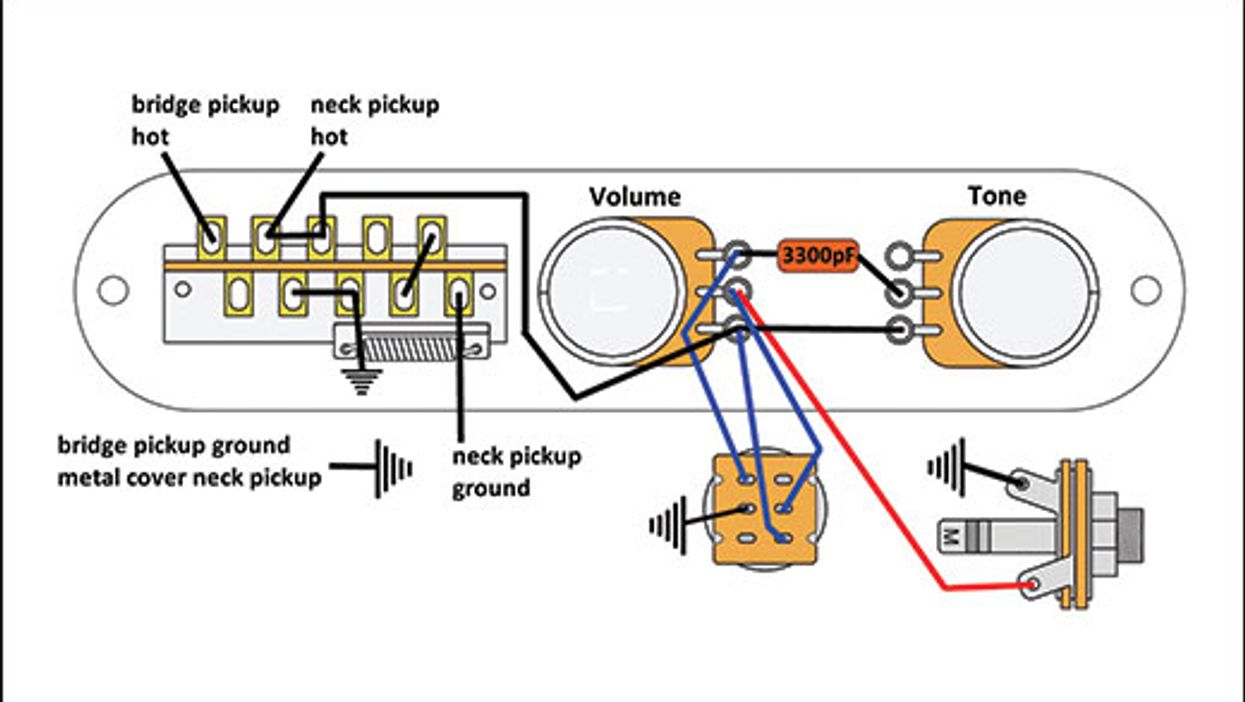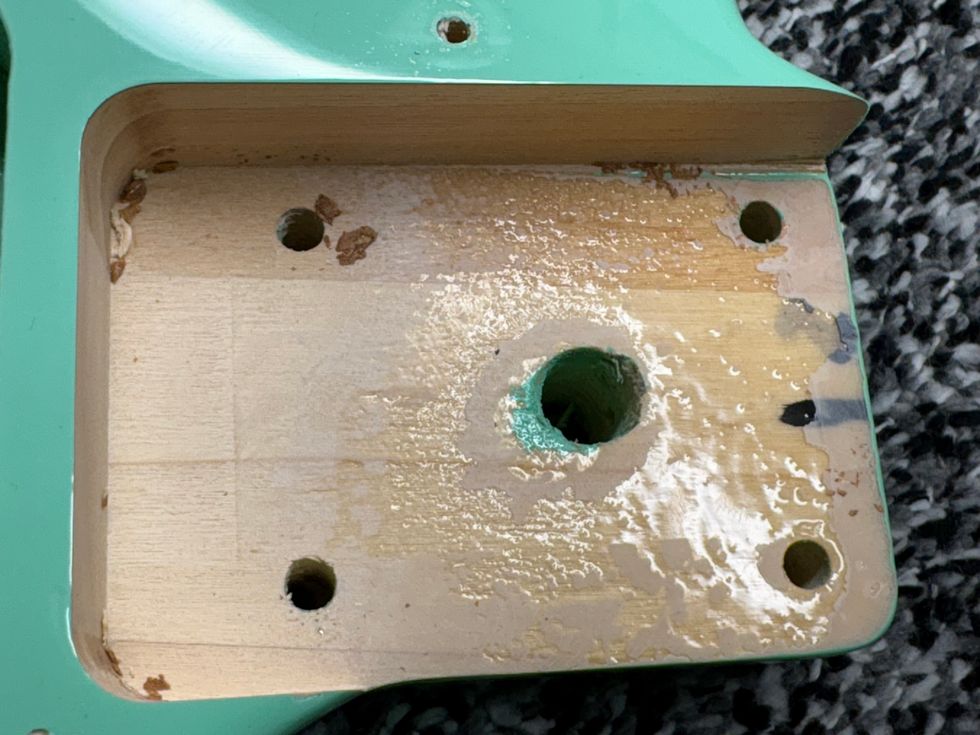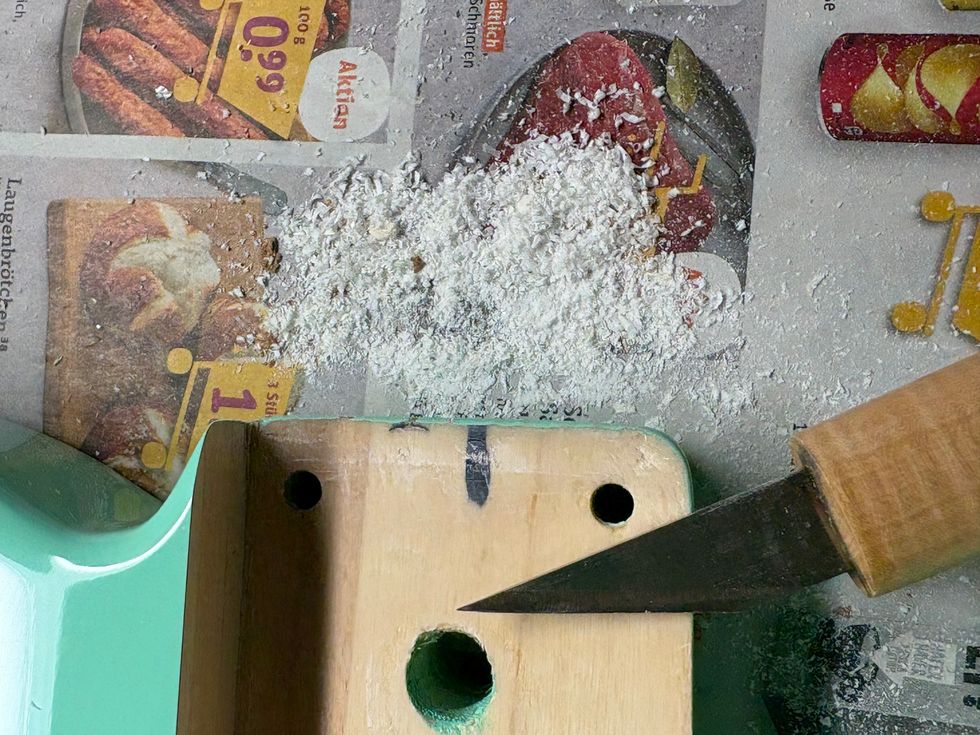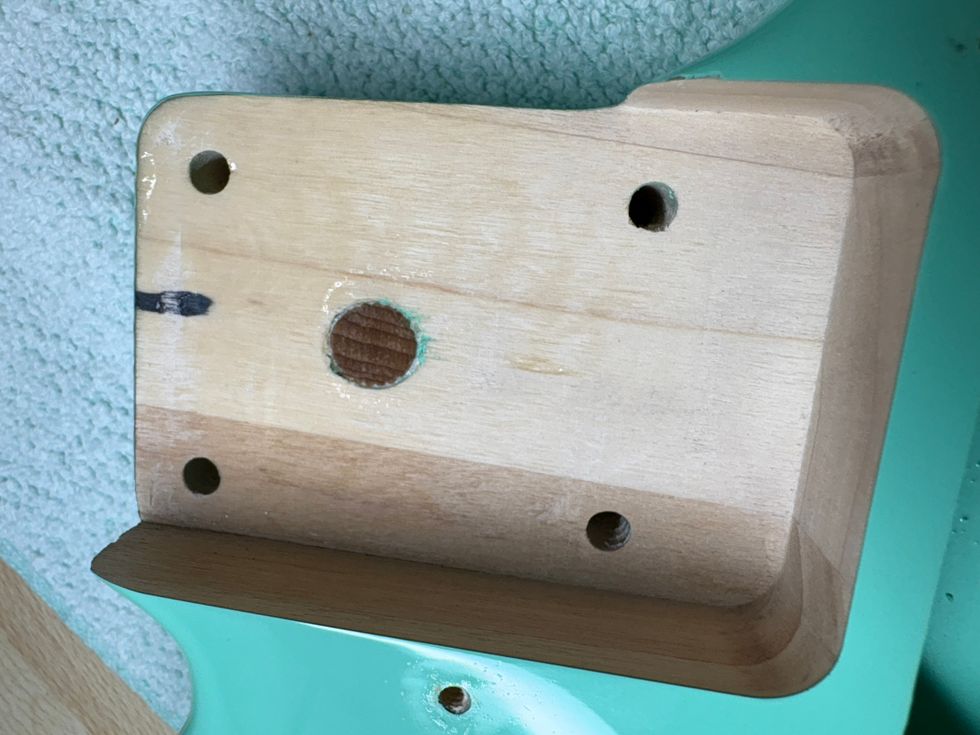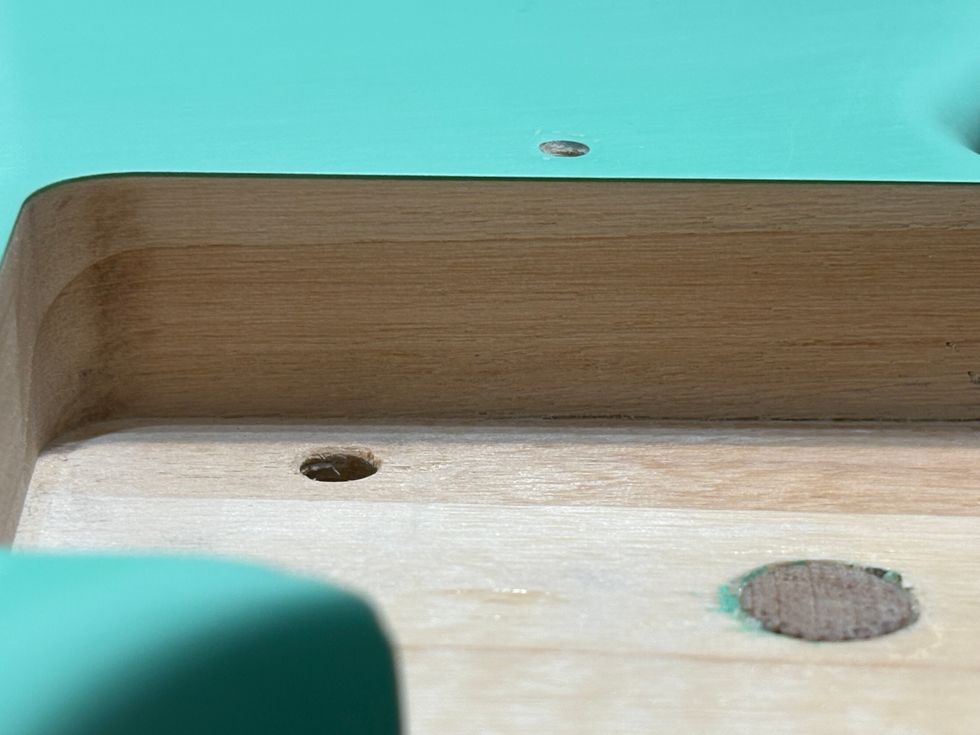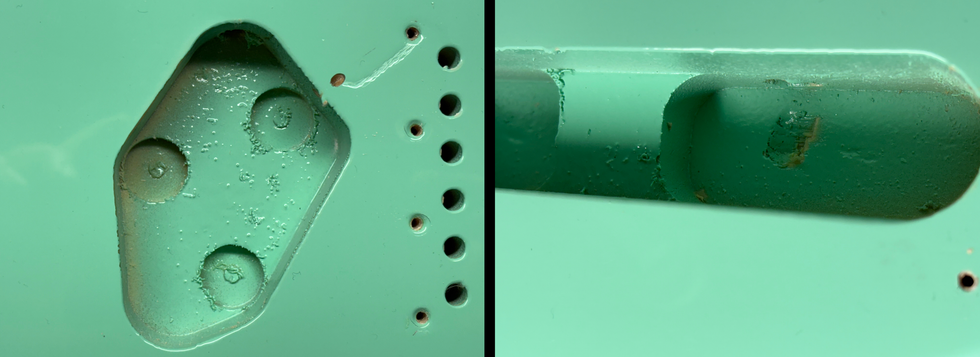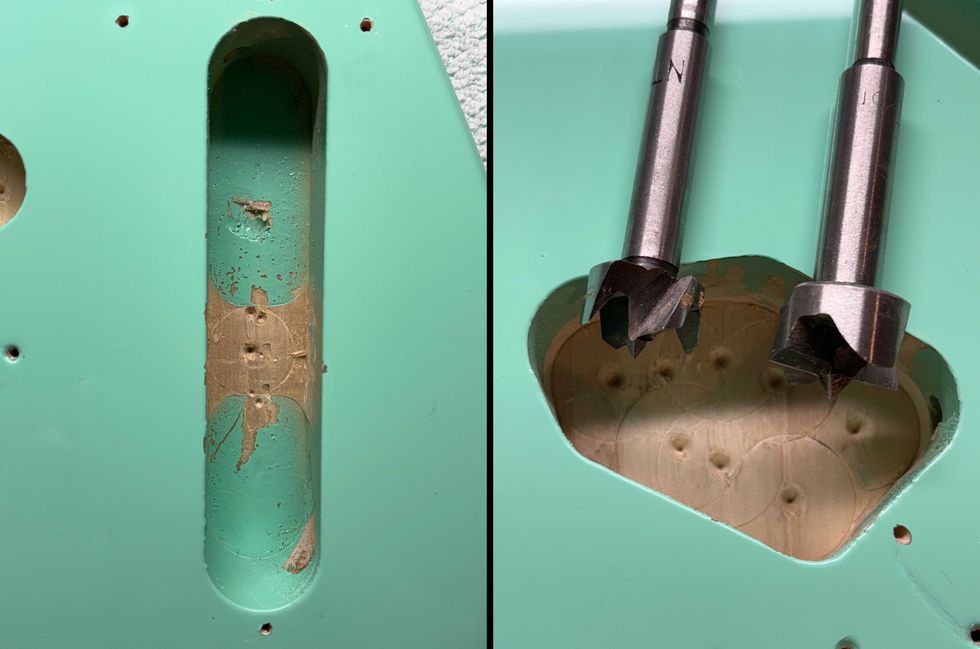Overview. This wiring offers four switchable sounds, a direct-through option, and a mod to convert the standard tone control into what I call a “warmth" control—something I use to simulate other pickups. The benefit of this wiring is that it is easily reversible and very flexible. Best of all, it's externally invisible: The Tele's classic appearance isn't altered in any way.
You don't need much for this mod. Here's your shopping list: a Telecaster 4-way switch, a 2PDT push/pull or push/push pot to replace your tone pot (alternatively you can keep your tone pot and add a 2PDT mini-toggle switch), and a 3300 pF capacitor.
The switching matrix looks like this:
• Position #1: bridge pickup.
• Position #2: bridge plus neck pickup in parallel.
• Position #3: neck pickup.
• Position #4: bridge plus neck pickup in series.
The details. A direct retrofit for the stock Fender 3-way pickup selector, the Telecaster 4-way switch is made by Oak Grigsby and available from Allparts, Stewart-MacDonald, and other luthier supply outfits. In addition to the three common Telecaster switching positions, this switch provides a fourth option: With both pickups connected in series, you get a big, beefy tone that's a lot louder than the other switching positions. This is perfect if you need a fat overdriven sound or a burly clean solo tone. It's even suitable for some jazz playing, if you also use the warmth control (more about this in a moment). Two single-coils in series can sound like a P-90 or a humbucker, and it's easy to drive your amp into saturation with this switching position. For me, this is one of the best Telecaster mods ever. We previously explored series wiring in a different context, so click here for all the details. Please note that you need to prepare your neck pickup with separate ground connections for the pickup itself and its metal cover, as described in this article.
We've also discussed the direct-through switch in an earlier Stratocaster mod, but hey, it works great on a Tele, too. This particular mod lets you connect any pickup or pickup combination directly to the output jack, thus bypassing the master volume and master tone control. You'll find a description of this mod here.
If you don't want to alter your Tele's visual appearance, simply replace the stock tone pot with a 2PDT push-pull or push-push switching pot. This stealth approach makes the direct-through mod invisible. But instead of using a switching pot, I like to install an additional 2PDT on/on mini-toggle switch right between the two stock knobs on the Tele's metal control plate. I find it easier to operate this way, but I don't care too much about visual appearance—as long as it's not a vintage guitar. If you take this mini-toggle route, you'll have to drill a 6 mm hole into the control plate. Obviously, this is not reversible. Either approach works fine, so it's simply up to your personal taste.
Now for the warmth control. This last step is easy because it only requires replacing the existing tone cap with another one—everything else stays the same.
Usually in a Telecaster you'll find a 0.022 µF tone cap, although more vintage-flavored models will have a 0.047 or 0.1 µF cap. Okay, we all know the problem: The useable range on these caps is very small. After only a short rotation of the knob, the tone gets really dark and muddy, losing all its color and life.
A tone cap with less capacitance can instantly fix this problem. My recommendation for this wiring is a 3300 pF cap. I prefer an Orange Drop cap for a Telecaster because its slightly mid-scooped tone is a perfect match for any Telecaster with vintage-flavored single-coils. With a 3300 pF cap, you have full control over the whole rotation of the tone pot. Even with the full capacitance engaged, the tone remains defined and transparent, yet warm (which explains the “warmth control" moniker).
It's easy to mimic several pickup types with the warmth control. For example, select position #4 to put both pickups in series and set the tone control between 40–50 percent, and presto—you're in the PAF humbucker ballpark. Try it! I'm confident that anyone who doesn't need those totally dark tones from common tone caps will find this mod very useful.
Now that we've discussed all the details, check out the wiring in Fig. 1. Be sure to break the connection to ground on the volume pot lug where the tone cap is soldered on the standard Telecaster wiring. This is a common error, and one to check if you find this setup isn't working as expected.
Note: I showed the direct-through mod as a separate toggle switch because it's much clearer to illustrate the connections this way. That said, the switching matrix of a 2PDT push-pull or push-push pot is identical, so if you opt to take that route it should be easy to transfer the diagrammed wiring.
That's it! Next month we'll return to our exploration of pickup parameters. This time we'll cover electrical phase and learn how to build a professional pickup polarity tester for only a few bucks. Until then ... keep on modding!


